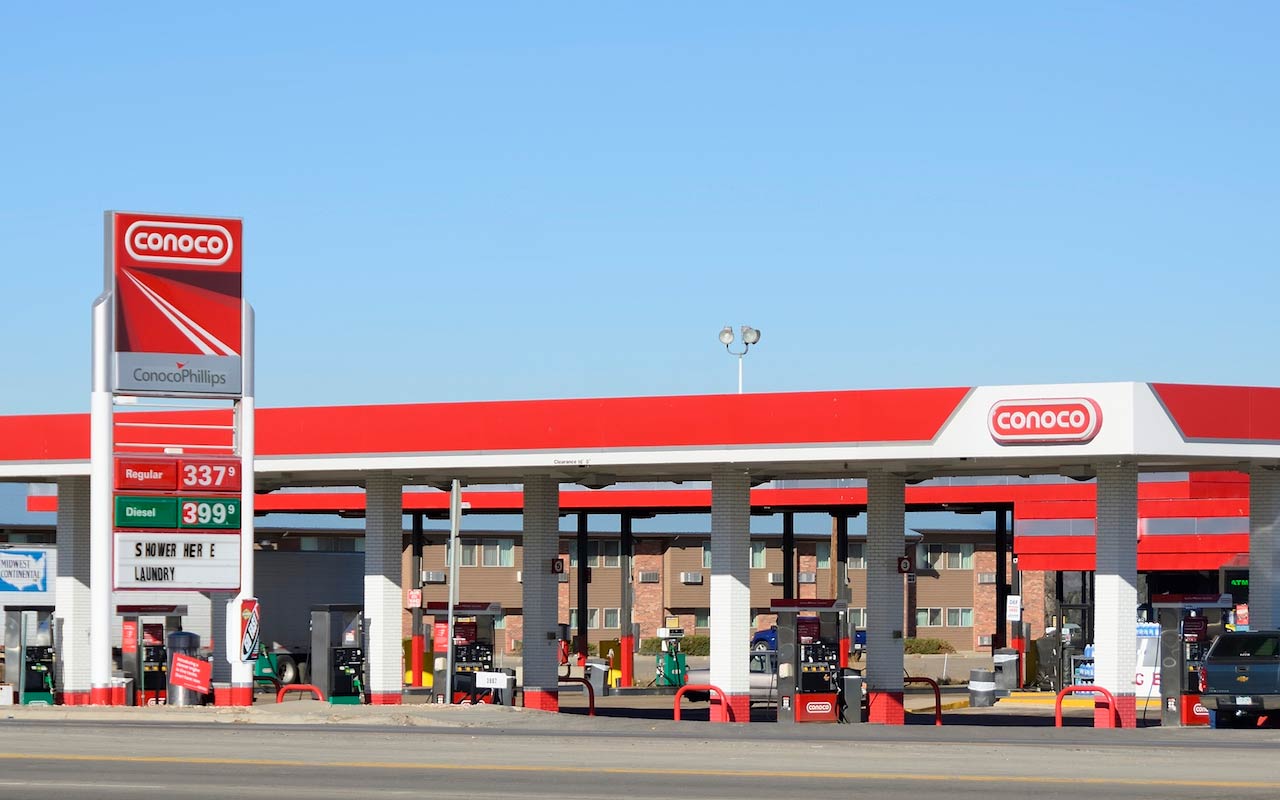7 Best Energy Stocks to Ride Out Oil's Recovery
Few oil plays look like a 'lock' in this low-price environment. But these battered energy stocks might be some of the top candidates for aggressive bounce-back gains.

When it comes to energy stocks, "safety" is in the eye of the beholder.
The world faces a massive supply glut as the coronavirus pandemic has simply removed much of the world's demand for oil. Energy has become so depressed that, a few weeks ago, the unthinkable happened: crude futures went negative. This means producers were paying contract holders to take crude off their hands.
The energy market has normalized since then, and oil has moved higher, but we're still looking at low average prices not seen since the Clinton administration. Prices are still well below breakeven costs for most energy stocks, even some of oil's elder statesmen. Dividends have been cut or suspended. Some – including Whiting Petroleum (WLL) and Diamond Offshore (DOFSQ) – have filed for bankruptcy, and other oil and gas stocks could face the same fate.
Thus, few energy investments feel "safe" right now. But as is the case after every oil crash, some energy stocks will survive. And of that group, some represent considerable bargains. They might not look pretty at the moment; a few have had to cut back on capital projects, even buybacks and dividends. But these moves have made them likelier to survive this downturn and come back swinging on an upturn in oil prices.
Here are seven of the best energy stocks to speculate on as oil tries to claw its way back. It could be a bumpy ride – every one of them could experience more volatility if oil prices swing wildly again. But thanks to smart fiscal management so far in this crisis, they might pan out well for adventurous investors.
Disclaimer
Data is as of May 11. Dividend yields are calculated by annualizing the most recent payout and dividing by the share price.

Magellan Midstream Partners, LP
- Market value: $9.6 billion
- Distribution yield: 9.6%*
Historically, pipeline and other energy infrastructure companies – often structured as master limited partnerships (MLPs) – were billed as "toll road operators" for the energy sector. Crude, regardless of price, needs to be stored and shipped, and these infrastructure players do just that, collecting fees along the way. There was little commodity price risk because they were paid on volume.
In an effort to boost profits, many MLPs and other pipeline plays moved into processing and other tangential businesses. This exposed them to directly to the price of crude, which intensified their pain in the current downturn.
Magellan Midstream Partners, LP (MMP, $42.72), however, has largely stuck to its guns. It continues to operate one of the largest networks of pipelines moving crude oil and refined products around the country, with some storage assets as well. In other words, Magellan mostly just moves crude and refined products from Point A to Point B.
In May, the company reported a 38% year-over-year jump in first-quarter net income despite oil's crash during the first three months of the year. Distributable cash flow (DCF) – a non-GAAP (generally accepted accounting principles) measure of profitability that represents cash that can be used to pay distributions – declined, but only by 3.6%.
Better still, Magellan says distribution coverage is expected to be 1.1 to 1.15 times what the company needs to pay shareholders for the rest of the year, despite the weakness in energy prices. This, a month after the company extended its streak of quarterly distribution increases that stretches back to 2010.
In the end, Magellan is as classic a toll-taking pipeline play as they come. Thanks to that, the MLP should be among the best energy stocks to ride out oil's current malaise.
* Distributions are similar to dividends, but are treated as tax-deferred returns of capital and require different paperwork come tax time.

Marathon Petroleum
- Market value: $21.3 billion
- Dividend yield: 7.1%
Marathon Petroleum (MPC, $32.70) should be another survivor of the current energy crash.
Unlike energy stocks such as former spinoff Marathon Oil (MRO), MPC has little commodity price risk – or at least, it doesn't have the same kind of risk that exploration-and-production companies have. That's because, as a refiner, Marathon can actually benefit from lower crude oil prices: The lower the cost for feedstocks, the better the margins on finished products such as gasoline, jet fuel, even plastic.
That's the good news.
The bad news is that MPC has suffered lower overall fuel demand. As we hunker down to work from home, rather than drive to work or fly to meetings, refined-product use is tumbling. The Energy Information Administration estimates that U.S. gasoline consumption fell by 1.7 million barrels per day during the first quarter of 2020. In the same quarter, Marathon was forced to take a whopping $12.4 billion impairment charge and suffered a net loss of $9.2 billion.
That might sound worse than it really is. In reality, the refining industry is prone to swings – COVID-19 is just the latest. Institutional investors realize this, which is why MPC has been able to easily tap the debt markets. MPC has made moves such as raising $2.5 billion in senior notes and adding a $1 billion revolving credit facility, giving the company available borrowing capacity of about $6.75 billion.
Marathon Petroleum also has slashed capital expenditures by $1.4 billion, suspended share buybacks and decided to idle some refining facilities. But so far, it hasn't touched the dividend.
The EIA estimates gasoline demand will improve during the back half of 2020. Marathon appears to be well-equipped to survive the current headaches and eventually bounce back, likely with its high-yielding dividend intact.

ConocoPhillips
- Market value: $45.3 billion
- Dividend yield: 4.0%
"Déjà Vu" is French for "already seen." And for major independent energy producer ConocoPhillips (COP, $42.27) … well, it has seen something like this before.
Back in 2014, the last time crude oil took a serious plunge, ConocoPhillips was a different animal. It was full of expensive projects and bloated capital spending requirements, and it wasn't nearly the shale player it was today. In the years since, Conoco sold expensive deep-sea operations, cut its dividend, paid off debt and become a shale superstar. This "lean and mean" operation worked, and COP became the blueprint for many other energy firms.
That also prepared ConocoPhillips to better withstand the current low-oil environment.
Yes, COP did decide to tighten its belt in March and April, announcing capital expenditure, output and share repurchase reductions. And yes, ConocoPhillips did lose $1.7 billion during the first quarter. But it still managed to generate $1.6 billion in cash flows from operations – enough to pay its dividend, expenditures and buybacks. The company also finished the quarter with more than $8 billion in cash and short-term investments, and more than $14 billion in liquidity once you factor in the $6 billion left on its revolver.
In fact, the company's in a good enough position that CEO Ryan Lance told CNBC he's "on the lookout" for acquisition targets.
Conoco, in taking its lumps years ago, became a better energy stock. That should give investors confidence in its ability to navigate this crisis.

Royal Dutch Shell
- Market value: $127.9 billion
- Dividend yield: 3.9%
Integrated energy giant Royal Dutch Shell (RDS.A, $32.76) did something recently that it hasn't done since World War II: It cut its dividend, from 47 cents per share to 16 cents. The news shocked the energy sector and broke the company's 75-year streak of payout continuity.
Shares of RDS.A, which are off 44% year-to-date, dropped nearly 13% on the announcement.
But perhaps investors should be buying with two fists. Because Royal Dutch Shell could end up being stronger for it once this is all done.
Shell's dividend cut was more proactive than reactive. Truth be told, Shell's first quarter didn't look all that bad. While the company suffered a small $24 million net loss, its "current cost of supplies (CCS) basis" earnings, backing out certain items, came to $2.9 billion, which wasn't far off CCS earnings from Q4 2019. Cash from operations clocked in at $14.8 billion, which would've been only a little shy of capital expenditures and its original dividend amount.
Shell appears to be taking the Conoco approach to this downturn.
To start the announcement of the dividend cut, Shell CEO Ben van Beurden said, "The world has fundamentally changed." And it's clear he's preparing for it. Shell might have been able to squeeze out its dividend for a few more quarters under these circumstances, but instead, the company decided to focus on fiscal strength now, enabling it to not just survive, but potentially be acquisitive and otherwise expand when the time is right.
It was a bitter pill for existing shareholders. But RDS.A still might be one of the best energy stocks for new shareholders, who will enjoy a decent yield around 4% from a company much better positioned to ride out the rest of this downturn.

EOG Resources
- Market value: $29.0 billion
- Dividend yield: 3.0%
The story at EOG Resources (EOG, $49.84) has always been the strength of its asset base.
EOG was one of the earliest frackers, and it moved into some of the best shale fields long before anyone else. This gave it prime acreage in places such as the Permian Basin, Eagle Ford and Bakken fields. The result of these premier wells has been lower costs, higher production rates and better cash generation than many competing energy stocks.
Despite its positioning, oil, which currently trades in the mid-$20s, still is too low for EOG to make a profit off it. So the company is pulling out its 2014 playbook. That is, EOG is drilling wells but not completing them. This will allow EOG to take advantage of low services costs and "turn the spigot on" at a later date. For now, it's shutting off roughly 40,000 barrels of oil per day worth of production, and it's reducing its capex spending by about $1 billion from a previously updated budget. All told, EOG has cut back planned capex by 46% from its original 2020 estimates.
The combination of already low costs and savings via well shut-ins allows EOG to keep its balance sheet healthy. EOG Resources finished Q1 with $2.9 billion of cash on hand and $2 billion available on its unsecured revolver. It also had no trouble raising an additional $1.5 billion in a bond sale at the end of April.
If oil manages to get into the low $30s, EOG should be able to fund its capital budget and dividends via cash flow for the rest of the year.

Schlumberger
- Market value: $24.1 billion
- Dividend yield: 2.9%
It stands to reason that if oil firms are suspending drilling, the firms providing drilling equipment won't see much business. That has been the case for Schlumberger (SLB, $17.36), which is off 57% year-to-date as rig counts in North America plunge.
Schlumberger's North American revenues slipped 7% quarter-over-quarter in Q1, following a double-digit decline at the end of 2019, and overall sales declined 5%. Margins contracted as SLB had to cut its services prices to compete. All of this translated into a hefty GAAP loss.
The biggest headline, however, was a 75% cut to the dividend.
Schlumberger is thinking ahead. The company reported positive free cash flow of $178 million – after recording a negative number a year ago. (Cash flow was even more robust in the quarters prior, however, so naturally prices are taking a toll.) Cutting the dividend, from 50 cents quarter to 12.5 cents, should save about $500 million quarterly. That'll help bolster its $3.3 billion cash position and help it pay off its debts more quickly.
Also, while North America is painting a bleak picture, SLB's hefty international operations are showing a little resilience. While off 10% from the previous quarter, sales were up 2% year-over-year. State-run oil companies operate under a very different directive than public ones; as such, they often keep drilling when many public companies wouldn't.
Schlumberger does indeed need oil prices to continue rebounding for the stock to emerge from this deep slump. But the combination of a more fortified balance sheet and a wide operational footprint should help keep the company afloat until then.

First Solar
- Market value: $4.5 billion
- Dividend yield: N/A
One of the biggest misconceptions is that solar energy and oil prices go hand in hand. As a result, when oil drops, solar stocks tend to plunge, too.
That's just silly. Petroleum-powered electric plants are a dying breed in the U.S., and currently comprise about half a percent of overall production. Solar now accounts for 1.8% and is assuredly on the rise.
But this misconstrued relationship could mean an opportunity for investors in leader First Solar (FSLR, $42.87).
First Solar not only makes high-efficiency panels, but it even builds and operates utility-scale solar plants. And while shares have declined 23% year-to-date, the company showed signs of resiliency in its first-quarter earnings. Revenues were marginally higher than in the year-ago period, and the company delivered a $90.7 million profit versus a $67.6 million loss. FSLR also recorded 1.1 gigawatts (direct current) of new net bookings for its Series 6 panels. That means utilities and installers still are looking out to the future despite the coronavirus' economic impact.
First Solar also boasts $1.6 billion in cash and marketable securities, and it's cash flow-positive. The company has provided limited guidance, but it says it plans on spending $450 million to $550 million in capital projects. That means without earning another dime, First Solar still has about three years' worth of working capital on its hands.
First Solar is the largest player in a growing field. And solar's tether to oil goes both ways, giving FSLR the potential to be one of the best energy stocks as oil prices recover.
Get Kiplinger Today newsletter — free
Profit and prosper with the best of Kiplinger's advice on investing, taxes, retirement, personal finance and much more. Delivered daily. Enter your email in the box and click Sign Me Up.
-
 Stock Market Today: Stocks Gain on Tech, Auto Tariff Talk
Stock Market Today: Stocks Gain on Tech, Auto Tariff TalkThe Trump administration said late Friday that it will temporarily halt tariffs on some Chinese tech imports.
By Karee Venema Published
-
 Sam's Club Plans Aggressive Expansion: Discover Its New Locations
Sam's Club Plans Aggressive Expansion: Discover Its New LocationsSam's Club expansion plans will open up to 15 new stores each year. Learn where they plan to open in 2025.
By Sean Jackson Published
-
 The Cheapest Places To Retire in the US
The Cheapest Places To Retire in the USWhen you're trying to balance a fixed income with an enjoyable retirement, cost of living is a crucial factor to consider.
By Stacy Rapacon Published
-
 Stock Market Today: Stocks Finish Mixed as Q3 Earnings Season Kicks Off
Stock Market Today: Stocks Finish Mixed as Q3 Earnings Season Kicks OffThe main markets opened higher thanks to solid bank earnings but sentiment fizzled into the close.
By Karee Venema Published
-
 Stock Market Today: Mega-Cap Strength Keeps Stocks Above Water
Stock Market Today: Mega-Cap Strength Keeps Stocks Above WaterThe main benchmarks eked out increases Monday as several mega-cap stocks gained ground.
By Karee Venema Published
-
 Dividends Are in a Rut
Dividends Are in a RutDividends may be going through a rough patch, but income investors should exercise patience.
By Jeffrey R. Kosnett Published
-
 Special Dividends Are On The Rise — Here's What to Know About Them
Special Dividends Are On The Rise — Here's What to Know About ThemMore companies are paying out special dividends this year. Here's what that means.
By Kim Clark Published
-
 Municipal Bonds Stand Firm
Municipal Bonds Stand FirmIf you have the cash to invest, municipal bonds are a worthy alternative to CDs or Treasuries – even as they stare down credit-market Armageddon.
By Jeffrey R. Kosnett Published
-
 Can Stocks Picked by Artificial Intelligence Beat the Market? 3 Stocks to Watch
Can Stocks Picked by Artificial Intelligence Beat the Market? 3 Stocks to Watchstocks An artificial intelligence stock-picking platform identifying high-potential equities has been sharp in the past. Here are three of its top stocks to watch over the next few months.
By Dan Burrows Last updated
-
 High Yields From High-Rate Lenders
High Yields From High-Rate LendersInvestors seeking out high yields can find them in high-rate lenders, non-bank lenders and a few financial REITs.
By Jeffrey R. Kosnett Published
